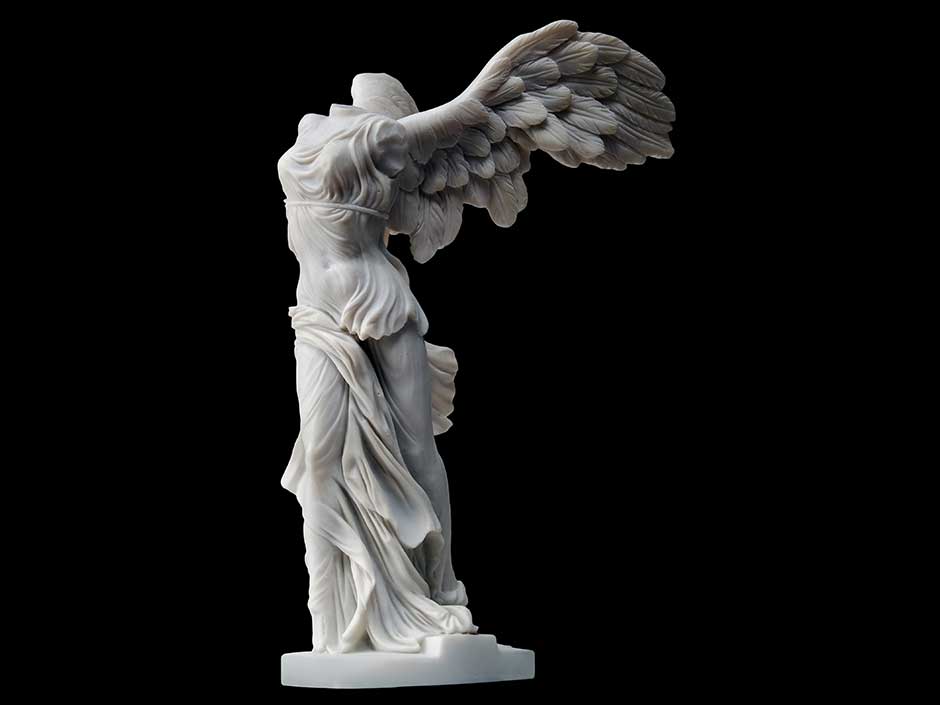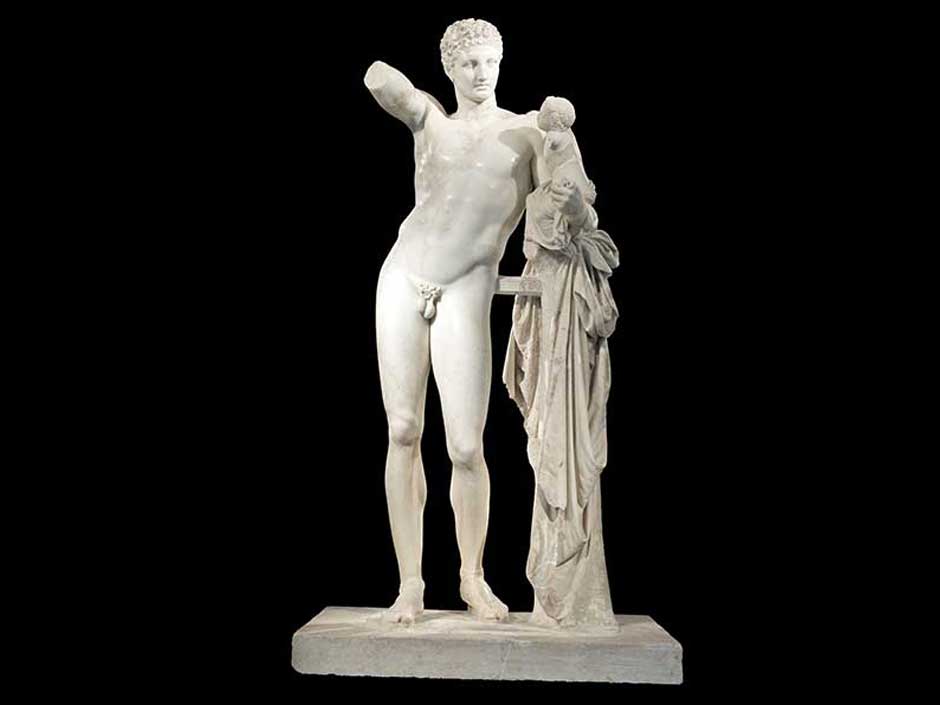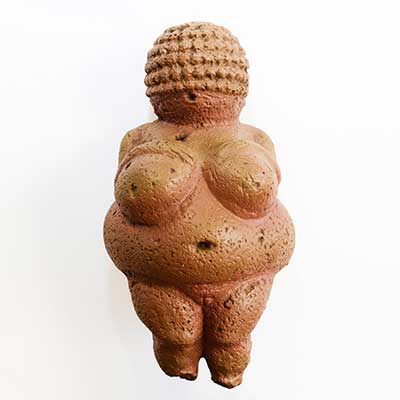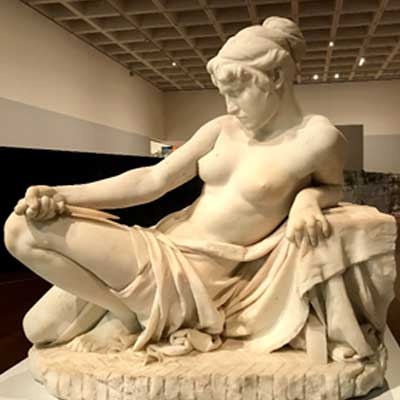Venus De Milo
Popularly believed to be a depiction of the Greek Goddess of love and beauty, this Grecian sculpture of Venus de Milo (c. 100BC) can be seen today in the Louvre Museum in France. As not much is known about this statue, many have suggested it is not, in fact, a depiction of Aphrodite/Venus, but is instead Amphitrite, the Sea Goddess. Others still suggest she’s Victory or even perhaps a prostitute. This now-famous ancient sculpture was found in 1820 by a farmer named Kentrotas, who also found fragments of an arm and hand alongside the statue. But, as the arms had a much ‘rougher’ appearance they were discarded during reassembly.
Winged Victory Of Samothrace

Considered today to be the greatest masterpiece of Hellenistic, the Winged Victory of Samothrace depicts the Greek goddess Nike. Created between 200BC and 190BC, it is currently on display at the Louvre. This sculpture was created, not to honour the goddess Nike, but to honour a sea battle. Following his naval victory in Cyrus, Macedonian General Demetrius erected this statue. It is considered a “remarkably skilful creation of visual effects”, in the billowing of the tunic and windswept fabric. It now resides in France alongside – and as one of – the most celebrated original statues in the world.
Hermes Of Praxiteles

This sculpture is a depiction of Hermes carrying the infant Dionysus, in honour of the Greek god Hermes. Crafted from Parian marble, it is believed to have been built by Praxiteles in 330BC. Known for the striking highly polished, glowing surface of its face and torso and its rasp and chiselled looking unfinished back, this Hermes sculpture is known today as one of the most original masterpieces of the great ancient Greek sculptor.
Venus Of Willendorf

Measuring just over four inches in height, this tiny sculpture was discovered in Austria in 1908. Dated as 28,000-25,000BC, this is one of the most famous of similar objects from the Old Stone Age. Not much is known about the purpose of such a sculpture. Many scholars have suggested that it may be a representation of the fertility goddess, or even a self-made portrait of women.
Lucretia

Lucretia by Italian artist Giacomo Gianotti was cast in 1980 and is currently travelling among the Picasso exhibit. Recently exhibited at Brisbane’s GOMA, just an hour from the Gold Coast. It is represented among Picasso’s works due to his influence on Ginotti and his creations. This sculpture “presents the idealised figure of women at a moment of absolute trauma”. According to Roman legend, Lucretia was raped, and in despair, she took her own life. Gianotti has expertly captured that turbulent moment of Lucretia poised to take her own life.
